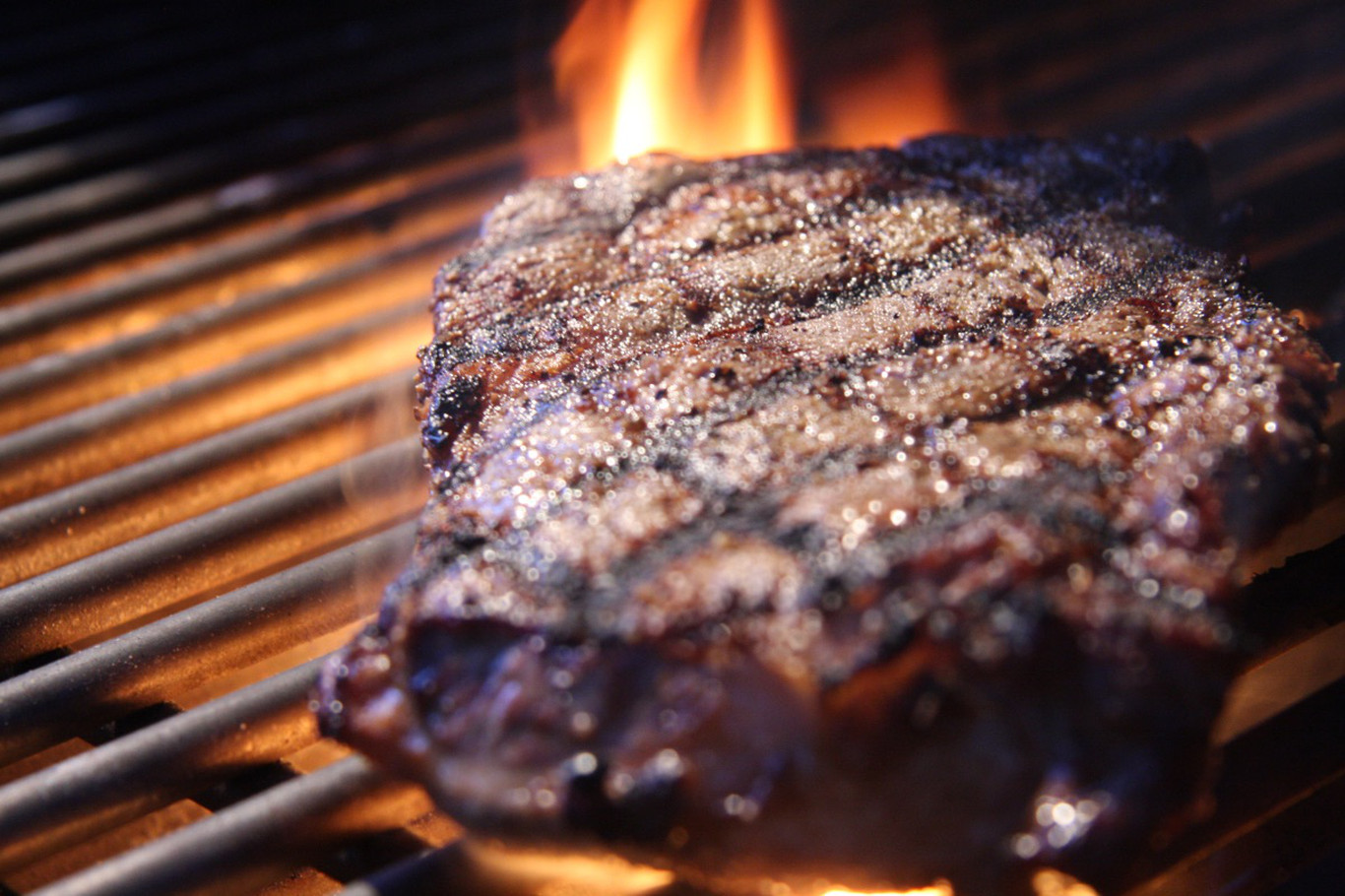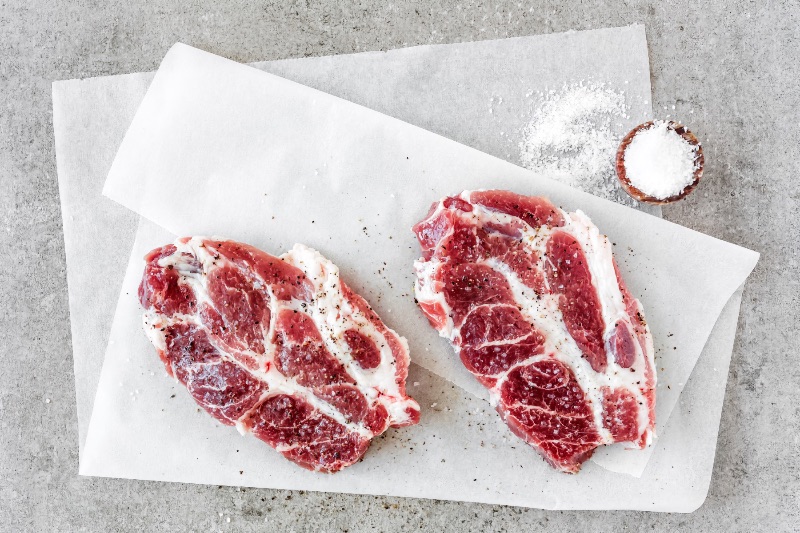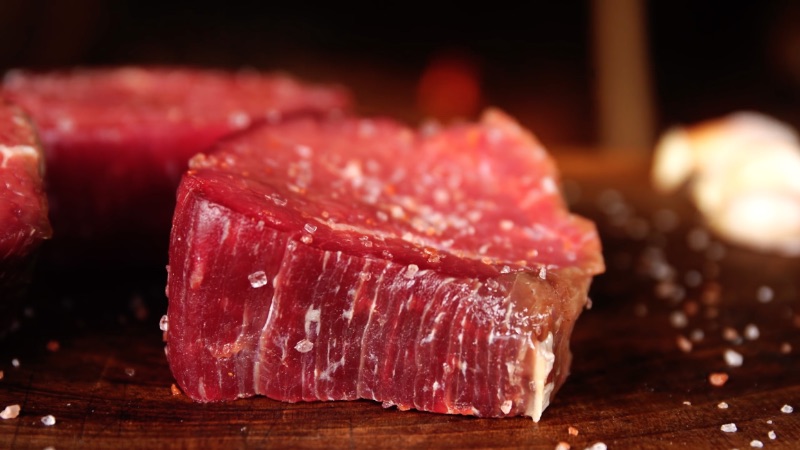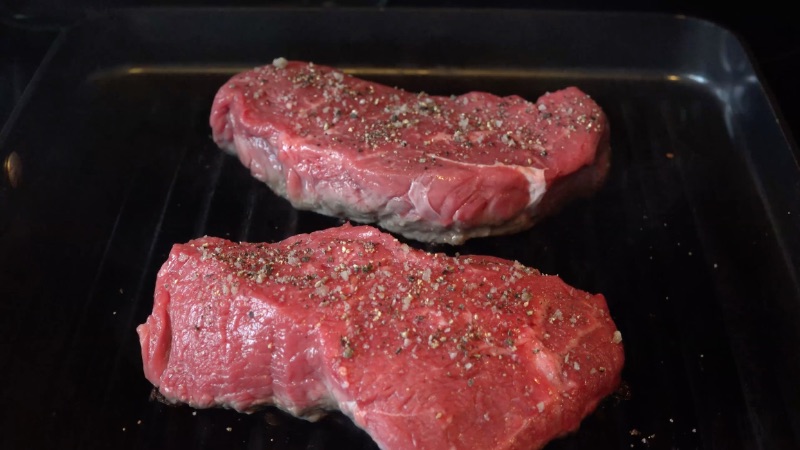Purists assert that a good-quality cut of steak is done ill justice at the hands of an overzealous grill. Contrast that to cheaper cuts like chuck roast, for example, which come to their prime slowly and forgivingly when slowly cooked. Cooking steak, therefore, is a paradoxically delicate matter for a powerfully primal affair. So it’s understandable that many diners and home cooks err on the side of overcooking it, especially if the quality of the meat might not be top shelf.
Regardless of what your preferences are—and we’re not knocking any of ‘em—here are eleven mistakes to avoid on your next steak night.
Choose the right piece of steak. The quality of your final product depends on your starting ingredients.
“Finding the best product you can get your hands on is always the hardest part of cooking a great steak,” says Ryan Prentiss. He’s executive chef at Prime + Proper steakhouse in Detroit, Michigan. “There's really only three things in my opinion that make for a good grilled steak: Beef, salt and fire.”
He goes on to explain: “We only work with USDA Prime beef, which is the highest grade of beef available, and accounts for only 1.5% of the beef in the nation. Fat is flavor, so look for beef that looks plump, bright red and has the most marbling. Marbling is the intramuscular fat present in high quality beef that gives it a ‘marbled’ appearance. Grain-fed or grain finished beef will have more marbling than a grass-fed beef.”
On aged steak:
“If you're lucky enough to be able to find a butcher that has dry-aged beef," Prentiss says. "I highly recommend trying anything aged from 15 to 30 days until you become acquainted with the flavor.”
Chef Joe Cervantez agrees, specifying that “steaks eat best at 23 to 28 days.” He’s executive chef at Brennan’s of Houston. “Most steaks from the grocery store are aged 14 days,” he says. If you’re up for trying your hand at aging and are lucky enough to have access to a cryovac, he recommends packing the meat in an airtight seal until it hits at least 23 days.
On cuts and thickness:
According to chef Dan Sharp of The Meatball Shop in New York, certain types of steaks best lend themselves to grilling. He recommends a skirt steak for a hot grill, whereas a NY strip steak or ribeye is best for a cast-iron pan over a burner. (For pan cooking, he recommends a 3/4-inch to 1-inch steak because “the thickness gives you the time to get a nice crust on the outside without overcooking the inside,” he says.)
Don’t cook your steaks straight from the fridge.
Prentiss recommends taking out your steak from the fridge about one hour before you’re going to cook it and setting it on a roasting rack. (This is also the best time to season it with salt, ideally medium grain sea salt, he says. More on that below.)
Sharp prefers to season his steaks a couple of hours in advance, and then agrees about letting them come to room temperature before cooking. There’s an exception, however: “If [the steak] on the thinner side,” he says, “starting it cold will give a buffer from overcooking the center.”
While chefs differ about the amount of room temp time before cooking, chef Dinesh Jayawardena recommends not squeezing the time below a half hour.
Don’t use the wrong kind of salt, and when in doubt, oversalt.
“True sea salt is always the way to go when seasoning a steak,” Prentiss says. “We use Jacobsen's Kosher Salt from Portland, Oregon. The grains are medium sized and have a pleasant minerality that lends itself perfectly to grilled beef. Any true fleur de sel or sel gris type sea salt will work well for good beef. Avoid table salt, iodized salt or small fine-grain sea salts as they have more weight to volume than larger grain salts and you can easily over season with them. Just think medium grain, true sea salt.”
Cervantez is a fan of kosher salt, which is, according to experts, virtually identical to sea salt. (Both are different from iodized table salt however, which is usually ultra fine grain and is adulterated with iodine, hence the name.) Cervantez is a fan of pepper, as well, and recommends combining both in equal quantities.
And when you do, “Always overseason your steaks a bit,” adds chef Christian Ragano. He’s the executive chef at Cindy’s, the rooftop restaurant at the Chicago Athletic Association. “When you think it's enough, always add a little more. A lot of salt and pepper always falls off during the cooking process and doesn't always penetrate the meat.”
Jayawardena of FireLake Grill House & Cocktail Bar in Bloomington, Minnesota, agrees. “Now is not the time to be shy about seasoning,” he says, adding that salt is “the most important ingredient you could ever add to a steak. Do this before you let the steaks rest so the seasoning has time to work its way deep into the meat.”
Don’t season your steak too soon—yes, that’s a thing.
“With larger steaks it's always a good idea to finish with some large flake or finishing salt once it's sliced,” says Prentiss. “If you do not have an hour to temper and season ahead of time, season immediately before grilling, anything shorter than 40 minutes will only pull moisture out of the steak and not let the outside get those beautiful grill marks and crust.”
Chef Juan Carlos of SoBou in New Orleans likes to add in a bit of olive oil as well, which he says help gets better sear or griddle marks. If you do decide to add some fat, stick with olive oil, not butter, says Angelo Auriana. He’s the chef at Factory Place Hospitality. “There is no real need for butter when cooking a steak because it already has plenty of fat and flavor in the meat itself,” he says. (That is, of course, assuming you have a solid starting product.)
Make sure it’s super dry before it hits the heat.
“Make sure you pat down your meat,” says Cervantez. “Dry meat forms the best crust.” (Not much more to say about that, then.)
Don’t use lighter foil or charcoal briquettes if you can avoid it.
According to Prentiss, “Always avoid lighter fluid if possible, and while convenient, charcoal briquettes can add an unpleasant kerosene flavor to meat grilled meats and should be avoided. If a wood/natural lump charcoal fire is unavailable or too inconvenient, propane grills will ultimately yield a better steak than charcoal briquettes and lighter fluid.”
The best way to go, however, is hardwood or hardwood lump charcoal. “Natural solid fuels add the most flavor to steaks while complementing their natural flavors instead of overpowering them,” says Prentiss. “At P+P we use seasoned oak logs and a hardwood lump charcoal made from mesquite, this yields us a consistent fire with minimal smoke that burns around 800 degrees Fahrenheit.”
Don’t start without a super hot grill.
“Be sure to let your charcoal fully catch and heat up before attempting to grill on it, about 20-30 minutes,” says Prentiss. “Your fire should have a bed of red hot coals, [with] high, even heat across the grill, and minimal flames and smoke.”
“A hot cooking surface is extremely important to caramelize the outside of the steak and secure in the flavor,” says Jayawardena. “This method will give you a crispy on the outside, yet moist and tender on the inside steak.”
Don’t forget the thermometer—even if you’re a pro.
Chef Christian Ragano thinks this is one of the most important things to remember. “Temping a steak by hand can be tricky,” he says. “It takes a ton of practice and a ton of experience. Thomas Keller once said, ‘You have to cook a steak a thousand times just to suck at it.'”
Don’t have a meat thermometer on hand? Ted Hopson, chef and co-owner of L.A.’s The Bellwether, recommends using metal cake testers. “People always are looking for secrets on how to get the perfect steak doneness,” he says. “We use metal cake testers. [They’re] the best tool you can use for this. Insert the metal tester into the steak, leave it for five seconds, then pull it out and touch it to your lips or inner wrist. The internal temp of the steak will tell you how done it is. If it is cold, your steak is rare, if it is just warm, medium rare, slightly hot, medium, etc... No more pushing on it to test it—what happens when you hit a muscle knot?—[and] now it is even easier. Plus, cake testers are less than a dollar and you can get them in baking sections or on Amazon.”
Chef Prentiss offered these numbers to aim for:
Rare: 120-130°F
Medium rare: 130-135°F
Medium: 140-145°F
Medium Well: 150-155°F
Well: 160-165°F
Don’t flip your steak more than once.
“Keep away from overturning your steak,” says executive sous chef Eric Schlict, of Urban Farmer in Philadelphia. “Let the Maillard reaction do its thing.” (That’s the fancy name for the chemical reaction between amino acids and sugars, which gives browned and caramelized food its distinctive flavor. We couldn’t have said it better, Wikipedia.) Ideally, according to Prentiss, you should turn the steak once on each side (to get those crosshatch grill marks), and only flip it once.
Avoid individual steaks, if cooking for a crowd.
“Don't be afraid to go with one large steak like a 32 oz Ribeye or 1 kilo Porterhouse for a group as opposed to multiple individual steaks,” says Prentiss. “One large steak is easier to manage and monitor on a grill than multiple smaller ones and armed with a good thermometer, any cook can nail a perfect medium-rare every time. Larger steaks like those also work well for two to six people because once sliced, the steak will have some slices that are cooked to the preference of each guest.” Because of the inherent internal variation of cooking times within one steak, Prentiss says, you can accommodate diners who prefer “medium rare” and “medium well” with just one piece of meat.
Don’t forget to let the steak rest.
“Cooking the steak to ten degrees below your desired temp and then resting it allows for the collagen in the meat to thicken the juices as it cools slightly,” says Prentiss. “This creates a way juicier steak than just cooking straight to temp.
Sharp agrees. “Let it rest. This is crucial,” he says. “Just because the steak is out of the pan doesn’t mean it stopped cooking. Keep it in a warm place—you don't want a cold steak—and rest it for about as long as you cooked it.”
Chef Carlos recommends allowing the steak to rest for half the cooking time before serving—so if your steak takes 10 minutes to cook, you’d let it rest for five.
If you’re not able to keep the steak warm while it rests, or you want to eat it quite hot, Prentiss recommends returning the steak to the grill after it’s rested and bringing it up to the internal temperature of your preference before eating.
This article was written by Gowri Chandra from Food & Wine and was legally licensed through the NewsCred publisher network. Please direct all licensing questions to legal@newscred.com.











